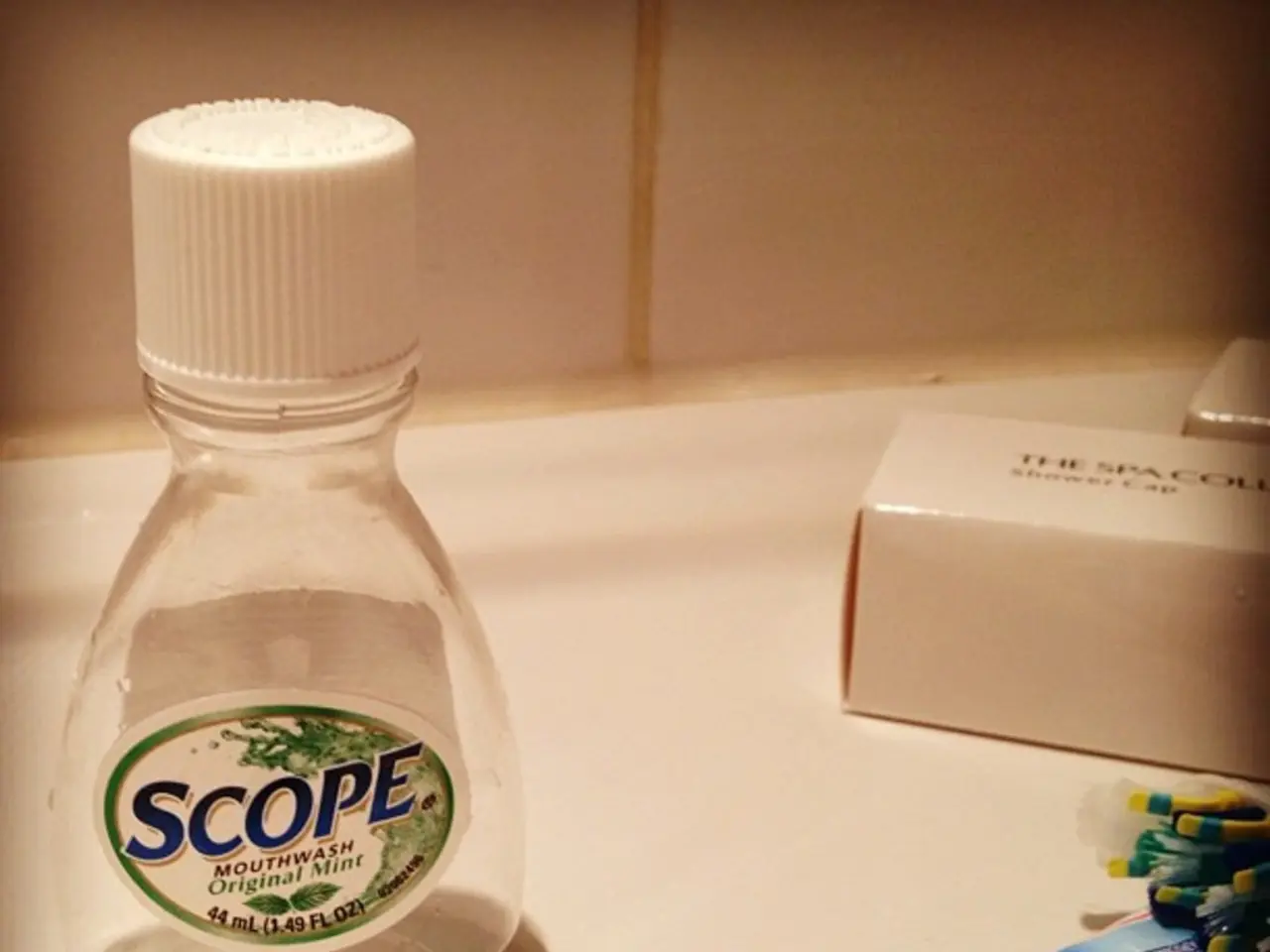Treatment for co-infection of strep and mono: Anticipated results
Strep throat and mononucleosis, also known as the 'kissing disease' and 'glandular fever', are two common infections that can sometimes occur simultaneously. This article will provide an overview of the symptoms, treatment options, and management strategies for such a coinfection.
Symptoms of Strep and Mono Coinfection
Strep throat, caused by Streptococcus bacteria, typically presents with a sudden sore throat, pain on swallowing, fever, red and swollen tonsils sometimes with white patches or streaks of pus, swollen lymph nodes in the neck, headache, and sometimes abdominal pain or nausea [1].
Mononucleosis, caused by the Epstein-Barr virus (EBV), usually includes persistent or intermittent fever, significant fatigue and malaise, sore throat, swollen lymph nodes in the neck, enlarged liver and spleen, and general malaise [2].
When these two infections coexist, symptoms may overlap and intensify, including pronounced sore throat, high fever, swollen lymph nodes, and fatigue, making clinical distinction challenging [3].
Treatment Options for Strep and Mono Coinfection
Strep Treatment
Strep throat is primarily treated with antibiotics such as penicillin or amoxicillin. If allergies are present, alternatives like cephalosporins or macrolides may be used. Ceftriaxone is used for pharyngeal infections in some treatment protocols [1][3].
Mono Treatment
No specific antiviral treatment is usually indicated for EBV mononucleosis. Management focuses on supportive care including rest, hydration, and analgesics/antipyretics for symptom relief [2]. Corticosteroids may be considered in severe airway obstruction.
Coinfection Considerations
Since strep is bacterial and mono is viral, antibiotics treat only the strep infection. Care must be taken with antibiotic choice; for example, amoxicillin or ampicillin administration in mono patients can cause a rash. If both infections coexist, antibiotic therapy targeting streptococcal infection is necessary while symptomatic management addresses mono symptoms [3].
In severe or complicated co-infections, especially with additional pathogens, intravenous broad-spectrum antibiotics such as ceftriaxone or combination regimens (e.g., with azithromycin) may be considered until specific pathogens are confirmed [4].
Recovery and Management Tips
Recovery from strep throat typically takes around a week, and for mono, it can take several weeks, and sometimes symptoms may persist for 6 months or longer [1][2].
Both strep throat and mono share some recovery tips, such as resting, drinking plenty of fluids, eating a balanced diet, and using throat lozenges and salt water gargles.
However, it's important to note that antibiotics will not help with mono. If antibiotics do not work, the person may need a different type of antibiotic, a longer treatment period, or no antibiotics at all if the cause is a virus like EBV (mono).
Antibiotics can shorten the course of strep throat, reduce symptoms, prevent the bacteria from spreading, and help prevent serious complications like rheumatic fever.
In conclusion, when dealing with a coinfection of strep throat and mononucleosis, it's crucial to understand the nature of each infection, administer appropriate treatments, and closely monitor the patient's condition. This approach ensures both infections are appropriately addressed while minimizing complications.
[1] Centers for Disease Control and Prevention. (2021). Strep throat. Retrieved from https://www.cdc.gov/groupastrep/disease/index.html
[2] National Health Service (UK). (2021). Mononucleosis (glandular fever). Retrieved from https://www.nhs.uk/conditions/mono/
[3] American Academy of Pediatrics. (2019). Diagnosis, management, and prevention of group A streptococcal infections in children, adolescents, and adults. Pediatrics, 144(4), e20192716.
[4] American Family Physician. (2018). Mononucleosis. Retrieved from https://www.aafp.org/afp/2018/0915/p362.html
[5] UpToDate. (2021). Treatment of group A streptococcal pharyngitis. Retrieved from https://www.uptodate.com/contents/treatment-of-group-a-streptococcal-pharyngitis
- Strep throat, caused by Streptococcus bacteria, and mononucleosis, caused by the Epstein-Barr virus, can sometimes occur together, leading to a coinfection with symptoms that may overlap and intensify.
- Treatment for a strep throat infection typically includes antibiotics such as penicillin or amoxicillin, while mononucleosis does not have a specific antiviral treatment, with management focusing on supportive care.
- When both infections are present, antibiotic therapy is necessary for the streptococcal infection, but care must be taken with antibiotic choice to avoid adverse reactions with mono, such as a rash with amoxicillin or ampicillin.
- Recovery from strep throat usually takes around a week, while mono recovery can last several weeks and sometimes persist for up to 6 months or longer. Both share common recovery tips such as rest, hydration, and pain relief.
- Mental health is an important aspect of recovery, and therapies and treatments may be necessary to manage stress and emotional well-being during illness, especially in chronic conditions like mononucleosis.
- Building cardiovascular health through fitness and exercise, in addition to maintaining a well-balanced diet and good hydration, can help support overall health and wellness and aid in the recovery process for both strep throat and mononucleosis.




